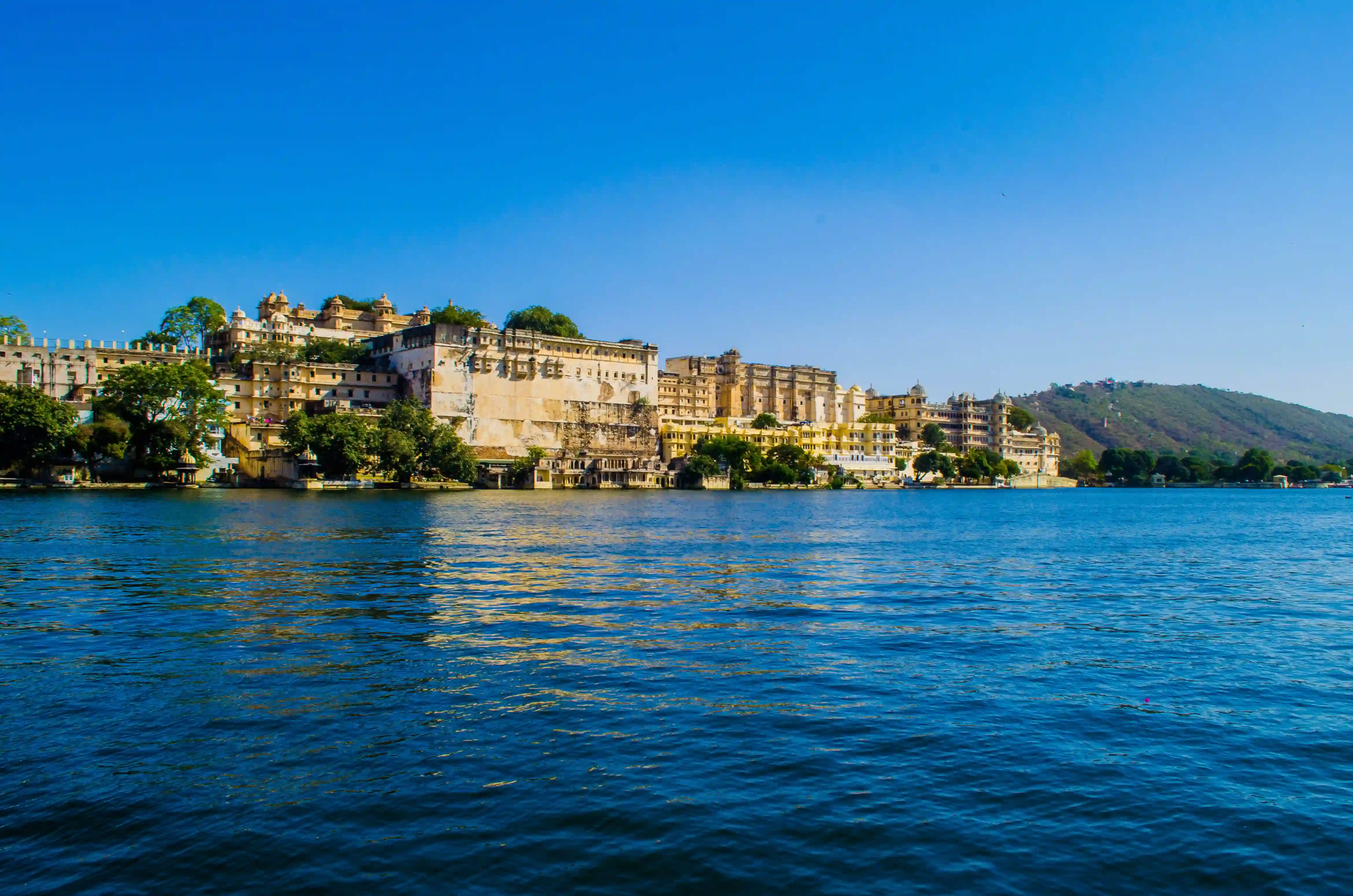Golden Triangle India Itinerary: Explore Delhi, Agra & Jaipur Like Never Before
September 20, 2025

Golden Triangle India Itinerary: Explore Delhi, Agra & Jaipur Like Never Before
The Golden Triangle of India—Delhi, Agra, and Jaipur—is one of the world’s most famed travel circuits, a tour that blends imperial majesty, architectural marvels, and vibrant culture. For centuries, these three cities have been at the center of India’s history, each giving its own tale, flavor, and rhythm. To tour the Golden Triangle is to step into a living tapestry where Mughal emperors, Rajput monarchs, and colonial rulers once roamed, and where today’s India lives with vibrancy and color.
For travelers, the Golden Triangle India Itinerary is more than a route; it is a revelation. In a week—or perhaps a few days—you move from the bustling streets of Old Delhi to the tranquil beauty of the Taj Mahal in Agra, and then to the pink-hued palaces of Jaipur. Each location possesses its own enchantment, but combined they create an experience that seems like a condensed tour across India’s essence.
Delhi: The Pulse of a Nation
The voyage frequently begins in Delhi, India’s capital and a city of many layers. Few towns in the world carry so much history within their walls while yet speeding headlong into modernity. Travelers entering into Delhi encounter both ancient ruins and glass towers, centuries-old bazaars and contemporary metro lines.
Old Delhi’s Heritage
Old Delhi, historically the Mughal capital of Shahjahanabad, is where history still breathes in narrow streets and busy markets. The Red Fort survives as a monument of Mughal glory, its walls formerly gleaming with inlay and silk-draped halls. Just ahead, Jama Masjid rises with its huge courtyard, greeting hundreds of worshippers and visitors alike. Climbing its minarets gives you a view of a city both chaotic and ageless.
Chandni Chowk, the historic market, is an adventure in itself. Rickshaws weave between spice carts, confectionery shops, and jewelry stores that have been around for generations. Travelers typically recall the sensory overload—the aroma of cardamom and saffron, the sound of merchants screaming out, the sight of multicolored saris swaying on display.
New Delhi’s Grandeur
In contrast, New Delhi has broad avenues and imperial architecture. India Gate, Rashtrapati Bhavan, and Connaught Place reflect the British mark, but museums like the National Museum and Gandhi Smriti highlight India’s deeper storylines. For many travelers, Delhi is the perfect introduction—overwhelming at first, but gradually unfolding like a novel whose chapters range from ancient kingdoms to modern democracy.
Agra: The City of Eternal Love
From Delhi, the road or rail leads to Agra, a city forever linked with the Taj Mahal. Yet Agra is more than simply one monument. It is a city that once shone as the capital of the Mughal Empire, packed with gardens, forts, and tombs that equal the best palaces in the world.
The Taj Mahal
Every Golden Triangle India Itinerary reaches its conclusion at the Taj Mahal. Arriving at dawn, travelers watch as the marble transitions from soft pink to bright white, and every eye fills with delight. Guides narrate the story of Shah Jahan and Mumtaz Mahal, and even seasoned visitors agree that the monument overwhelms them with emotion.
The Taj Mahal is not only the centerpiece of Agra but also a reminder of the empire’s creative ambition. To stand before it is to understand why poets called it a dream in marble, why travelers across generations characterized it as beyond compare.
Agra Fort and Beyond
Yet Agra provides more. The Agra Fort, with its red sandstone walls and magnificent apartments, was once the seat of Mughal sovereignty. Walking through its courtyards, you can envision rulers holding court and warriors heading to fight. From its balconies, Shah Jahan is supposed to have stared at the Taj Mahal in his final years of captivity—a detail that impresses travelers as much as the fort’s majesty.
Nearby, the mausoleum of Itmad-ud-Daulah, often called the “Baby Taj,” shows beautiful marble inlay that foretold the Taj Mahal. Fatehpur Sikri, a short drive away, exposes the ghost city of Akbar’s abandoned capital, with its blend of Islamic, Hindu, and Persian architecture. Travelers who include these locations often believe they have discovered Agra’s secret depths, beyond the shadow of the Taj.
Jaipur: The Royal City of Palaces
From Agra, the road heads west into Rajasthan, where Jaipur rises like a desert pearl. Known as the “Pink City” for the rose-colored hue of its historic structures, Jaipur epitomizes Rajput pride and artistry. Here, palaces and forts narrate stories of kings and warriors, while bazaars overflow with handicrafts, fabrics, and jewelry that travelers carry home as treasures.
Amber Fort
Perched atop a hill, Amber Fort dominates the landscape with its honey-colored walls and massive entrances. Inside, mirrored hallways shimmer with thousands of tiny reflections, courtyards open to panoramic views, and murals depict legends of gods and rulers. Many visitors consider Amber Fort as the centerpiece of Jaipur, where history feels both royal and vibrant.
City Palace and Hawa Mahal
In the center of Jaipur, the City Palace remains partly a royal palace, its courtyards and museums reflecting Rajput beauty. Nearby, the Hawa Mahal—or “Palace of Winds”—with its lattice windows, permitted royal women to see city life unseen. For modern travelers, it is a marvel of design and symmetry, one of the most photographed façade in India.
Jantar Mantar and Beyond
Jaipur is also a city of science and astronomy. The Jantar Mantar, an 18th-century observatory, has gigantic equipment that measure time, track stars, and predict eclipses with amazing accuracy. Standing amid these gigantic stone monuments, travelers marvel at the vision of Maharaja Jai Singh II, who dreamed not just of palaces but also of cosmic order.
Beyond monuments, Jaipur’s bazaars beckon. Johari Bazaar glitters with gemstones, Bapu Bazaar with vibrant textiles, and Tripolia with brassware and carpets. Many visitors remember Jaipur not simply for its vistas but for the excitement of bargaining, the taste of spicy street cuisine, and the riot of colors that defines Rajasthan.
The Golden Triangle Journey: Experiences That Stay
What makes the Golden Triangle itinerary unforgettable is not only the landmarks but the drive between them. The drive from Delhi to Agra takes you by farmland, villages, and roadside shops offering sugarcane juice. The road from Agra to Jaipur crosses Fatehpur Sikri’s red sandstone arches and eventually twists into Rajasthan’s parched hills. Each length of road is a chapter in itself, revealing insights of India’s everyday existence.
Travelers often tell memories of tea breaks in little towns, of meeting craftsmen who carve marble or weave carpets, of hearing folk music in the desert evenings. The Golden Triangle is not merely a path on the map; it is a voyage across contrasts—imperial and rural, medieval and contemporary, hectic and quiet.
Voices of Travelers
Reviews and impressions give the Golden Triangle its human touch.
One traveler recalled: “Delhi was overwhelming, but in its chaos I felt alive. Agra crushed my heart with its magnificence, while Jaipur made me fall in love with colors I never knew existed. Together, they showed me India—not in bits, but as an entire story.”
Another said of their first sight of the Taj Mahal after a bustling morning in Delhi: “It was like stepping into a dream. After the noise and activity of Chandni Chowk, suddenly there was calm, symmetry, and love engraved in marble.”
Others remember Jaipur’s bazaars: the whirl of turbans, the shimmer of jewels, the taste of kachoris from a street stand. For many, the Golden Triangle is their first experience to India, and it leaves them both captivated and ready to return.
